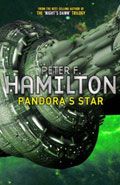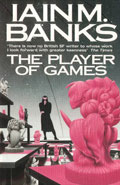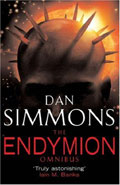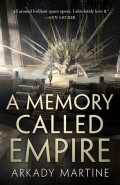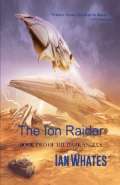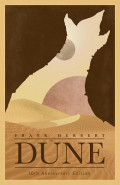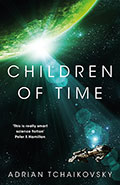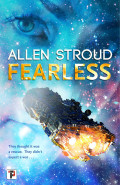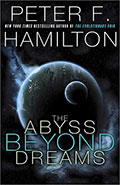Dune
By Frank Herbert

- Dune
-
Author: Frank Herbert
-
Publisher: Hodder Fiction
- ISBN: 978-0340960196
- Published: August 1965
- Pages: 592
- Format reviewed: Paperback
- Review date: 08/09/2021
- Language: English
Throughout history many have searched for ways to live longer, from healthy eating and exercise to eliminating illness and seeking an elixir of life. I think it’s fair to say it’s a common goal to extend our lifespan.
What would you say if I told you there was a substance that, if ingested regularly, could prolong your life by at least double and maybe up to four times that of the average person. In rare cases even longer. This substance might also allow a navigator to transverse the stars, along with having an addictive, psychedelic effect. Such a substance could become even more valuable than printer ink and more sought after than black gold.
Wars have been fought over less, and whomever controlled this “spice” might just control the galaxy. But then imagine that there is only one, small, sandy planet in the whole known universe where such a substance exists and extracting it is fraught with danger, not least from the ever present threat of huge worm-like creatures that swim through the sand like seals before leaping from the dunes like a huge great megalodon, big enough to swallow you whole.
That is of course the premise that Frank Herbert first considered in 1959 when he began writing what is sometimes considered one of the most influential science fiction novels in modern literature.
Like a few of the most popular novels though, it might never have been published, and the story of how it came to be is almost as fascinating as the book itself. Herbert was nearing his forties and struggling to bring in enough money as a writer, so much so that he relied on his wife to support the family (not something considered the norm in 1950’s America). As any determined writer though he never gave up, and in 1959 he found inspiration while walking and flying over the sands near Florence, Oregon. He was there to write a freelance article about an intriguing program by the US Department of Agriculture that aimed to stabilise the constantly shifting sand dunes by introducing a hardy European beach grass. These sands were a real issue with constantly strong, easterly Pacific winds blowing huge waves which buried everything in its path and had even led to a few deaths. He was most intrigued by the idea of terraform engineering.
The ultimate result was that he wrote a big, table-busting story - submitting it to one of the most influential editors of the day, John W Campbell. Campbell edited and serialised the story, appearing as eight episodes - a three part serial Dune World followed by a slower paced five part called The Prophet of Dune, printed in the Analog magazine between December 1963 and May 1965.
Herbert still wanted his work published as a novel though and despite Campbell’s approval, twenty three publishers rejected Dune for various reasons (it was too big, too risky, too expensive to print) before Chiltern - a small publisher who specialised in hobby magazines and car repair manuals offered Herbert $7500.
Chiltern did a small print run and initial feedback was luke-warm at best. But then Dune began to get some real acclaim and it wasn’t that long before it won the inaugural Nebula and the 1966 Hugo award. Even after these awards commercial success was slow, gaining momentum in the late 1960’s and through the 1970’s, to the point that in 1976 the third book in the series, Children of Dune, became the first ever science fiction novel to be a New York Times best-seller.
Since then Dune has gone on to sell over 12 million copies in 14 languages around the world, spawned five direct sequels and a larger series written by Herbert’s son Brian in collaboration with the prolific author Kevin J. Anderson. Dune has become a board game, the setting for a number of successful computer games (plus one that led to the demise of Cryo Interactive) a cult classic 1980’s film by David Lynch and a better received (now over 20 year old) mini-series by the Sci-Fi channel. Alexandro Jodorowski even planned a 14 hour long film that was going to be scored by Pink Floyd and have Salvador Dalí portray Emperor Shaddam Corrino IV. Sadly, of course, it never got off the ground.
Dune’s influence on modern fiction cannot be understated, without Dune we would be unlikely to have Star Wars, Game of Thrones, The Wheel of Time and so many other rich stories. Star Wars especially borrowed much, originally planning on having "warring families" fighting over the control of “aura spice”, with mention of "spice mines" still left in the final cut, not to mention the desert planet of tatooine and “moisture farming”. But influence goes far beyond that and you can see Dune's DNA in many science fiction stories, from Aliens to Stargate to Blade Runner. Even Studio Ghibli's Nausicaä of the Valley of the Wind plays homage to Dune with its themes of colonization and environmentalism, not to mention giant, dangerous, fauna.
But it’s been over sixty years since Herbert first started writing about Atreides, Arrakis, Melange and sand worms. After all this time is it really worth the renewed attention, is it really worth Denis Villeneuve, Jon Spaihts and Eric Roth adapting the story for Warner Brothers to spend 165 million dollars on just the first half?
To answer that question we need to look back at this grand space-opera and see how well it’s aged. To see if it's still relevant a fifth of the way through the 21st Century.
I’ve been reading the book, playing the games and watching the films since the 1980’s and it’s one of those books that I re-read every now and again, each time I do it feels different, with messages that resonate in a different way.
Dune is set far in the future, the 10th millennium, with the story taking place far away from Earth. A vast Galactic Empire rules, with warring families fighting, manipulating and generally behaving badly for control, especially control of Arrakis (only known location of “spice”) and as we begin the Padishah Emperor Shaddam IV has given Lord Leto of house Atreides control over the lucrative spice mining operations on the planet, in opposition to their rivals, house Harkonnen.
Setting the story in an entirely different time to our own provides some freedom over the level of technology we see, without sacrificing as much credibility or suspension of disbelief. Even so, apart from the outlandish names, Herbert makes sure not to introduce too much technobabble or extended technological exposition - which really helps to widen the potential readership. You don't have to like hard science fiction to like this book. Like Star Wars you don’t even need to like science fiction (or fantasy), although you do have to get used to the strange and unusual names. There was an event in the Dune universe (around ten thousand years before the story) known as the Butlerian Jihad, a far-reaching conflict that resulted in the destruction of virtually all forms of computers, conscious robots and other thinking machines. Since then a lot of such technology has been banned and made a taboo subject:
"Thou shalt not make a machine in the likeness of a human mind"
As a result the technology we see in Dune is quite different and doesn’t feel any more dated than it did twenty years ago. There are still things like personal force shields, eugenics, anti-gravity suppressors and of course vast space ships, but it’s all coloured by that decision to avoid AI and smart computers. Instead the focus is placed on human genetic manipulation and the resulting potential, both physically and mentally. It’s different enough that there was even a book - The Science of Dune (edited by Kevin R. Grazier) - published in 2008 that analysed and deconstructed the technology.
We explore the planet Arrakis as Lord Leto, his young son Paul Atreides and their family arrive to take over the operations from the departing Harkonnen, who it’s clear from the start don’t intend to give up the planet and its vital trade so easily. The Harkonnen are an opulent, epicurean and ruthless people who seem to lack morals and there is little they won’t do to destroy the Atreides family and recover Arrakis for themselves.
The planet itself is unforgiving. Being a dry, sandy planet, water is scarce and much valued, so much so that when visiting the surface people must wear a suit that retains the body's moisture and recycles it for consumption. Sandstorms are common and dangerous. Then there are the huge sandworms, which live beneath the surface and are attracted by vibrations, breaching the surface and consuming or otherwise destroying the cause of such vibrations. They are big, fast and deadly and as a result few live to tell the tale. There is also an indigenous population known as the Fremen, whose culture and identity have been shaped by the harsh living conditions of the planet. Such attention is given to Arrakis by Herbert that it becomes a protagonist itself, a living breathing thing.
Paul Atreides shows signs that he might be the Fremen’s prophesied messiah Muad’Dib, predicted to lead the fight that free’s their planet. Paul’s journey is one that is familiar to many stories - the powerful figure who’s fall from grace and triumphant return has been seen many times. The difference here though is that Herbert suggests that Paul isn’t really so much an altruistic hero as he is just someone carrying out his actions through the more selfish motivation of self preservation. The author leaves some ambiguity that Paul may or may not be the messianic figure the Fremen believe him to be, after all isn’t he really just a result of carefully crafted eugenics and manipulation. Such manipulations are carried out by a powerful order of mystic nuns known as the Bene Gesserit, seemingly based on jewish-like values. Women in science fiction (and fiction in general) was sadly lacking in the 1960’s and it must have been seen as somewhat revolutionary to include such powerful female figures. Less revolutionary was how other women are treated outside of the Bene Gesserit with the majority of female roles subservient to men - such as concubines - although I guess to a certain extent this does fit with the Patriarchal society that the families are structured by. Even so this does age the book more than any other part.
The Fremen, modelled on the Arabic culture, form the moral compass around which the story navigates. Paul doesn’t try to change these people to fit his values, but instead learns from them and adapts. The Fremen are used to explore the juxtaposition between the need to control the environment to further society and that of preserving the environment to maintain cultural heritage. The major themes of ecology and religion still feel relevant, if anything they feel more so than the last time I read the book given the Earth’s climate crisis and rise of polarising extremist viewpoints. It could even still be seen as somewhat revelationally to a western audience - a rich, young, male white, messianic figure leading a darker skinned, strangely blue-eyed warband of jihadis against the corrupt, oppressive government should at the least raise a few eyebrows.
When you combine these big ideas, the political intrigue of warring families, along with the sweeping scale of the story encompassing 600 or so pages, the result isn’t the easiest book to read. The pace can be slow and at times the writing is so dense it could stop a bullet, with some stuffy and eccentric prose getting in the way. It does reward you for your patience and perseverance though. It’s epic in every sense of the word, with an intriguing story, some great ideas and big themes that resonate just as powerfully today as they did nearly sixty years ago.
An essential read for any science fiction fan, an equally important read for anyone else.
Written on 8th September 2021 by Ant .
